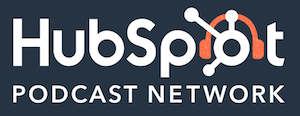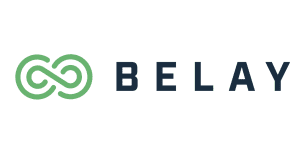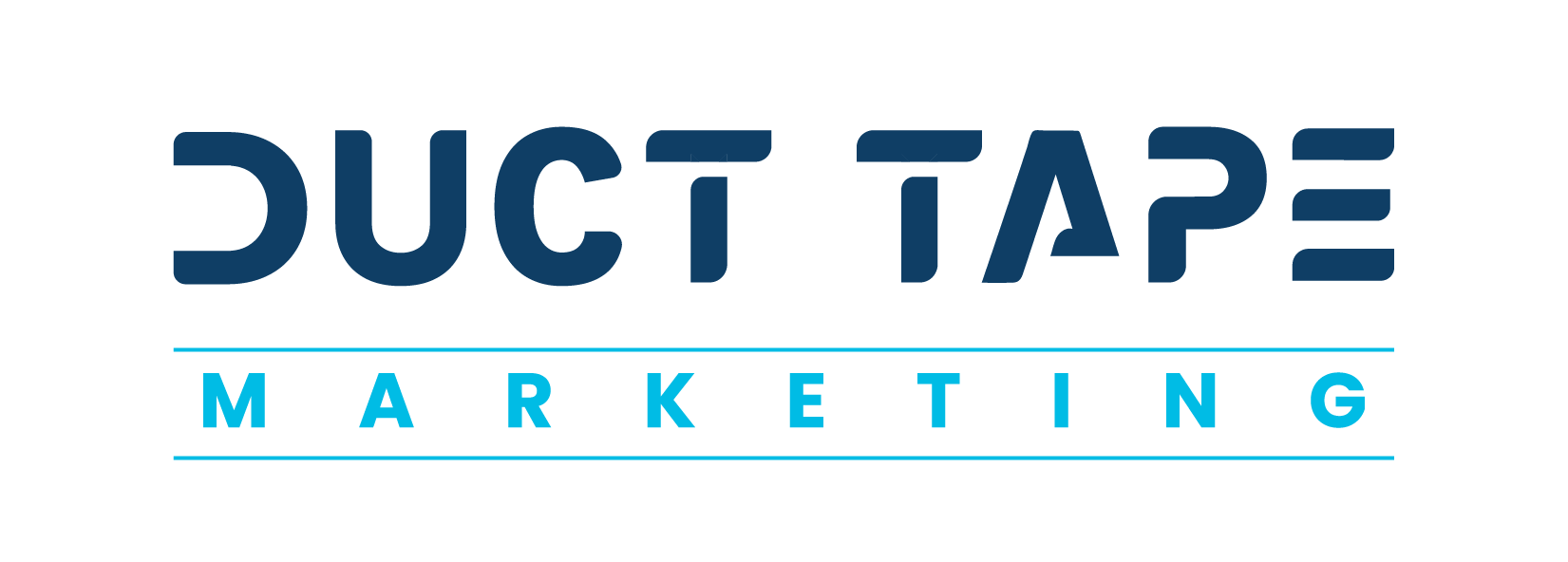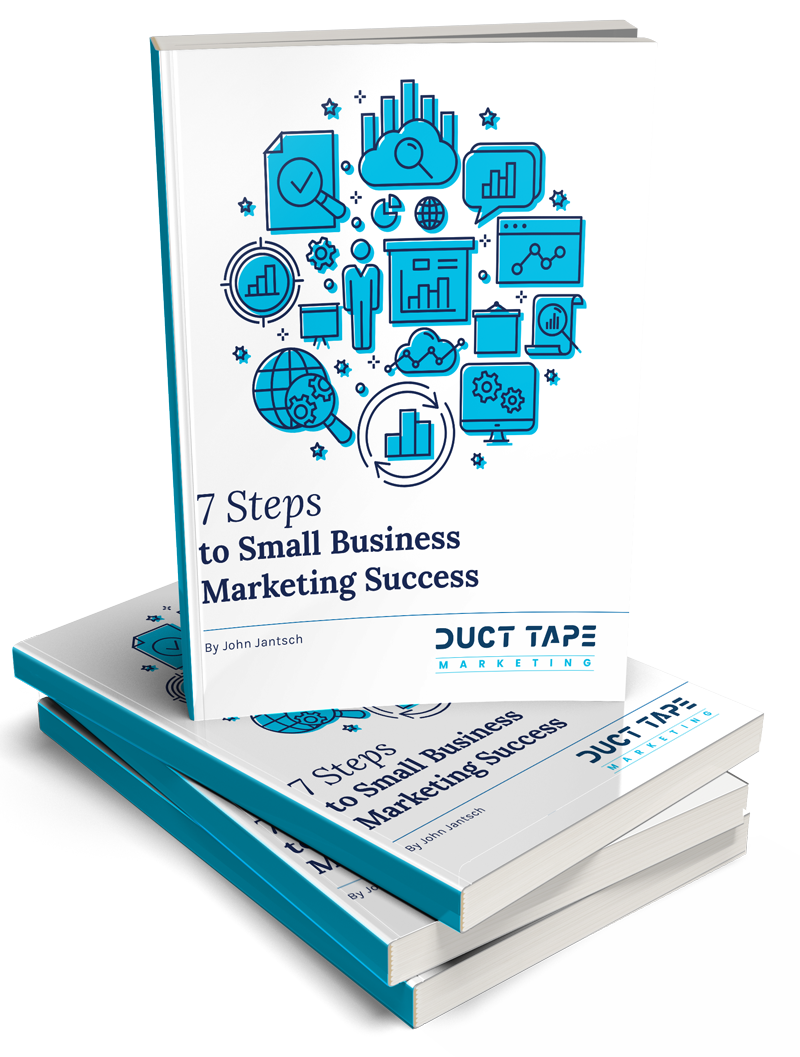Marketing Podcast with Donna Cutting
 In this episode of the Duct Tape Marketing Podcast, I interview Donna Cutting. Donna is the Founder and CEO of Red-Carpet Learning Worldwide and works with mission-driven leaders to help them create cultures of happy, engaged people who deliver exceptional customer service. She’s the author of three books including: The Celebrity Experience: Insider Secrets to Delivering Red-Carpet Customer Service and her new book Employees First! Inspire, Engage, and Focus on the HEART of Your Organization.
In this episode of the Duct Tape Marketing Podcast, I interview Donna Cutting. Donna is the Founder and CEO of Red-Carpet Learning Worldwide and works with mission-driven leaders to help them create cultures of happy, engaged people who deliver exceptional customer service. She’s the author of three books including: The Celebrity Experience: Insider Secrets to Delivering Red-Carpet Customer Service and her new book Employees First! Inspire, Engage, and Focus on the HEART of Your Organization.
![]()
![]()
Key Takeaway:
The world is changing and it’s time to take care of the people who take care of your customers. How do we get an hourly employee who has never received red carpet customer service, to give it? The answer is obvious, isn’t it? You roll out the red carpet for them, of course.
In this episode, Donna Cutting joins me as we talk about how giving your team members a voice in your company, supporting them with knowledge and training, giving them purpose and equitable pay, translates into higher productivity and happier customers. We dive into core concepts from her new book Employees First! and share strategies for honoring the very people who make your company what it is—your internal customers—your team.
Questions I ask Donna Cutting:
- [1:18] Would you say that in a lot of ways you writing a book about inspiring and engaging with your employees is a derivative of customer service?
- [6:11] How do you get people to think about this as a journey?
- [9:54] Would you talk a little bit about the messaging that you’re seeing that really attracts the kind of employee that’s looking for something meaningful?
- [13:06] Similarly to buyer’s remorse, sometimes people experience remorse after taking a new job — how can we keep that experience as high as everything that attracted them?
- [15:54] What are you finding in that channel as a way to attract new employees?
- [17:17] Do we need to change the way that we think about women and diversity in the workplace?
- [19:50] Where can people find out more about the work that you do?
More About Donna Cutting:
- Her new book — Employees First! Inspire, Engage, and Focus on the HEART of Your Organization
- Red Carpet Learning
More About Duct Tape Marketing Consultant Network:
Like this show? Click on over and give us a review on iTunes, please!
John Jantsch (00:00): This episode of the duct tape marketing podcast is brought to you by the salesman podcast, hosted by Will Barron and brought to you by the HubSpot podcast network. Look, if you work in sales, wanna learn how to sell, and frankly who doesn't check out the salesman podcast, where hosts will Barron helps sales professionals learn how to find buyers and win big business ineffective and ethical ways. And if you wanna start someplace, I recommend the four step process to influencing buying decisions. Listen to the salesman podcast, wherever you get your podcast.
John Jantsch (00:43): Hello, and welcome to another episode of the duct tape marketing podcast. This is John Jantsch and my guest today is Donna Cutting. She is the founder and CEO of red carpet learning worldwide and works with mission driven leaders. To help them create cultures of happy, engaged people who deliver exceptional customer service. She's the author of three books, including the celebrity experience. And one we're gonna talk about today, a new one called employees first inspire, engage and focus on the heart of your organization. So welcome back, Donna.
Donna Cutting (01:15): Thanks, John. It's good. Always good to be here with you.
John Jantsch (01:18): So, you know, in a lot of ways you writing a book about treating your employees or inspiring engaging is really just sort of derivative of customer service, right? I mean, because guess who's delivering customer service.
Donna Cutting (01:32): Yeah, exactly. I actually love that. You put it that way because so many people will say, oh, you're switching now, you're going to a place I'm like, no, I'm not switching it all. We're talking about your internal customers. And in many ways it's the book I should have written first.
John Jantsch (01:49): Well, I mean, it's all just positioning because I mean, a lot of, I know in your previous work, a lot of customer services is about, I mean, your people are probably treating their customers about as well as you're treating your people. Right. So, I mean, there, there's definitely, you've definitely written in red carpet really about the idea of getting engaged, you know, people involved in the purpose. I mean, so it's really in a lot of ways, it's not that different, is it?
Donna Cutting (02:15): No, it's not. And there's always been, uh, it it's, it's definitely not because it all works together, right. It's how you treat your team member versus it is how they treat your, is how they treat your customers and all of that stems also from the culture that you're creating. So, and there's always been you're right. There's always been a chapter, a theme throughout both of my other books that focused, uh, perhaps more on traditional customers, but that you had to re really look at how you treat your employees as well. But this one is dedicated specifically to employees
John Jantsch (02:52): And we're really not just talking about, uh, foosball tables and cappuccino machines. I mean, you know, as like, oh, give 'em lots of perks. I mean, really at the heart of this is the idea of giving them a, a purpose or something to believe in, isn't it?
Donna Cutting (03:05): Yeah. It's a lot of different things cuz we're going through so many changes right now. And you can imagine John, it was such a daunting task to write a book in, in about the employee experience in a time when are going through, uh, such incredible chain, but yeah, really looking at what is it that people really want, you know, and one of those things that keeps coming up again and again is, and especially after, you know, having gone through what we've been through in the last couple of years, just really looking people are looking for meaning in their work and you know, what am I, what am I giving to that gives me a purpose that's beyond a paycheck and the paycheck's important. Don't get me wrong. It, it's probably more important than we've believed it to be in the past, but, but beyond the paycheck, what, what am I doing that is contributing to something that's greater than myself, that's making a difference in the world.
John Jantsch (04:05): Yeah. And that's maybe that's a bit of an attitude change. I, I, it certainly is something that's associated say with millennials and the next generation, but I think it's actually, as you said, we keep pointing to this, you know, with all the change we've gone through, I mean, a lot of feel 50 year olds are resigning from their possessions and looking for that, that meaning all of a sudden, I think that's probably a bigger, uh, sea change maybe than just kind of a generational change.
Donna Cutting (04:32): Yeah. There's a couple of things. Well I think all of us, right, or many of us I'll say many of us because I got called out on LinkedIn, by somebody who said, you know, they've always held to their values and nothing about them has changed since the pandemic. So we'll say many people, many people I think got really clear about what really matters, you know, in their life. And so that's, what's driving their choices. So if they choose to continue in you working work, life balance is going to be a huge part of the discussion, a part of their decision about where they want to work. But I think you're right. That's where we're seeing a lot of people who, you know, in their fifties, early sixties retiring a little sooner than they anticipated. They would in many cases because they've decided no it's time to, to move on, to really focus on what matters in my life. And this is a huge change because there are so many more people in that age bracket than even, you know, millennials and the generation Z. So that's causing a lot of a little disruption in the workplace right now.
John Jantsch (05:48): So one of the things that I've been, um, preaching for years is this idea of an end to end customer journey that, you know, that attracts the right people that, you know, really has them see you as the logical choice that retains customers that turns them into evangelists. And really, I think in a lot of ways for hiring, we're talking about the same kind of journey, right? I mean, there is an attraction component. There is a great experience, you know, component, there is a retention component. So, you know, how do you kind of view that end to end? Because a lot of people, oh, I need to run better ads on indeed, you know, as hiring. Right. So how do you get people to think about this as a journey?
Donna Cutting (06:23): Yeah. And you're absolutely right. It all works together and I think what's happened. You know, I think, I don't think we're talking about anything that people haven't heard before, but I think what it, what happened in the workplace before was a lot of like short term bandaid thinking the I've got to run a better ad on a indeed, you know, and, and really, I think the organizations that are gonna come ahead that are going to attract the best people that are going to are the ones who are going to look at the whole journey and say, really look at their organizational culture and ask the questions. Like, are we really making people feel valued? Are we really, are they clear even what the expectations are and what, you know, going back to, to traditional customer service? Like what does that even look like? And are we giving them the tools that they need and you know, are we supporting them in the way that they're excited and, and inspired and feel like they have some personal professional development that can happen in the organization and this takes time, it takes planning. It takes commitment. Yeah. But the organization know leaders that are willing to look at that journey and really commit to it are the ones five years, 10 years from now are gonna come out ahead.
John Jantsch (07:45): Yeah. And I think you, you missed a key. It also takes investment, you know, for a lot of organizations, but I use the word investment as opposed to cost because it, the theory is, uh, there's going to be a return on that investment.
Donna Cutting (07:57): There's gonna be a return. And also I think, you know, it's amazing to me, even with my own customers, when I ask the question, you know, have you put dollars and cents to what it's costing you to all this employee turnover that you have. And very few of them have, like, they know it's costing them money, but they don't know exactly how much. Sure. You know. Yeah. And I think if you people really looked at the numbers, the amount of money that they were spending because of this, you know what I'm calling bandaid thinking like quick fix thinking and not committing to that whole journey, they would find that the resources to be able to do it, or there is just shifting a focus from, you know, short term thinking to long term strategy.
John Jantsch (08:43): And now let's hear from our sponsor, you know, as a business owner, you eventually realize you can't do everything yourself, but hiring is complicated. And what if you only need part-time help your job is to be the visionary. But instead you spend countless hours on tasks that could be done easily and arguably better by someone else. And that's where the powerful multiplying effects of delegation, our mission critical our friends at Belay can help. Belay is an incredible organiz revolutionizing productivity with their virtual assistance bookkeepers website specialists and social media managers for growing organizations to help you get started. Belay is offering their latest, e-book delegate to elevate for free to all of my listeners. Now in this e-book, you'll learn how to re name time to focus on what you can do by delegating to download your free copy. Just text tape to 5, 5, 1, 2, 3, that's TAPE to 5, 5, 1, 2, 3, accomplish more and juggle less with Belay.
John Jantsch (09:54): So let's break down a couple of components. You know, one of the first one is, you know, messaging that attracts, we work with a lot of clients that now we've shifted to, you know, helping them attract folks in their marketing. Right. And you know, we were working with a contractor looking for skilled liper folks and you know, their ads are all about, here's the benefits you get, you know, here's what you can expect. You know, here's why this good job. And we changed their message and they were getting nothing with, and we changed their messaging to be something around the idea of, are you getting the respect that you deserve in your current job? And all of a sudden it's like, boom. You know, they got attention. And I think that's a part that a lot of people are missing. People. People don't necessarily change jobs for $2 an hour, you know, more it's they leave a bad situation. So talk a little bit about, you know, the messaging that you're seeing that really attracts that kind of player that's looking for something meaningful.
Donna Cutting (10:47): Yeah. That's so interesting. It's funny. My friend, Steven Tweed who's in the home care space, he did a, a study with caregivers in, in the home care space. And one of the things they found was that putting a number like putting a salary or a wage on the ad was actually beneficial in attracting people, but it doesn't keep people. So what keeps people is exactly what I think you just said is, are people feeling, uh, respected? Are they, you honestly, John, this is, this is all of what I talk about. It's really about whether you're talking about traditional customers or employees or just people in general. We wanna be seen, we wanna be heard. We want to feel like we matter, right. That's, that's the bottom line of what we're talking about. So when people feel like they're not seeing, they're not her, they're not respected.
Donna Cutting (11:43): That is when they're more likely to start looking around. And right now they have a lot of different options. And I think, you know, I've been doing a study with hourly workers on what makes them feel valued. And a lot of times, I think, again, what we do in organizations is the quick, like we'll do employee appreciation day, right. Or the pizza party, or we're just gonna thank everybody, you know, the hero side, all of those wonderful things. I'm not putting them down, but none of that is coming up in my conversations with hourly workers about what makes them feel valued. It's more, you know, somebody individually noticed something that I did that I contributed, right. Or somebody saw something in the, my boss saw something in me that I didn't even see in myself. And now I've grown professionally, you know, as a result of that. And then just people knowing them, knowing their names. Yeah, yeah. You know, knowing what's going on in their life and then caring about their work life balance is really huge.
John Jantsch (12:52): So let's go to the next phase. You know, a lot of people probably have stories, listeners, I'm sure where they, you know, got a new job. They're all excited about, they showed up on day one and it's like, nobody greeted them. Nobody really made 'em feel welcome. And I know you have your red carpet onboarding. So maybe talk a little bit about some of the ways, I mean, that's the customer experience, right. Buyers remorse happened, you know, I took the job that's of alert of buyers remorse. Right. And so, you know, how can we keep that experience as high as everything that's attracted
Donna Cutting (13:19): From day one? And I think, I mean, this is so great for you too, because one of the things I think is that human resources and hiring managers could be working with people and marketing professionals. Right. Exactly. To really look at that experience. But one of the things that because of, uh, staffing shortages, yeah. You know, something that I'm seeing is people, you know, they bring 'em on board. They give 'em whatever education, they need to complete whatever compliance, you know, depending, especially in healthcare or financial services or whatever. They're like these compliance ribbon training, you know, education they need to have. And then they get 'em out there as soon as possible because they need people out on the floor and they're losing them within three days. You know, not sometime I've even heard. Some people say they ghost them in the middle of orientation.
Donna Cutting (14:10): Right. Like they start the day and then they leave at lunch. And so, so really being intentional about, yeah, what are you creating an orientation and an onboarding process that introduces them to your culture that connects them to coworkers that, um, communicates and clarifies all of those little things they need to know to really start the job effective. And yes, then those compliant activities. But then are you partnering up with someone who is well prepared to be able to mentor them through, you know, the first few weeks of their job? Are you looking at like, you know, how would you roll out the red carpet for a customer on their first day? And are you generating ideas around, around that as well? Like literally roll the red carpet. Sure. But are you sending note cards? Are you staying in touch? Are you checking back in with them? Is there a sign, you know, with their name on it, when they walk in the door, there could be any number of ways to do that. The focus is how in, and of course I share many of those ways in the book employees first, but it's really about acting with intention instead of just like bringing people in as quickly as possible and then throwing them out there because you have a need.
John Jantsch (15:33): All right, let's move on down the journey. One of the, probably most effective ways to get new employees is a happy employee, says, I've got a friend who ought to join us, but I hear time and time again from employees, they just can't get 'em to do it. Uh, they can't get, they don't get the referrals. They think they should, they make offers, they give money, they give bonuses. What are you finding in that avenue or that channel as a way to attract new employees?
Donna Cutting (16:00): Yeah. I, I mean, I'd be questioning why that is. Yeah, yeah. Right. You know, that's the thing because, and money and bonuses is one thing. Again, I see that a lot, like referral bonuses, I also, and on bonuses that it's a, a short term strategy though. If you have a group of employees who are really thrilled to be working at your company, they're, they're going to tell their friends they're going to recruit their friends. So one of the best things I think that employers can be doing right now is to really focus on ask what's our, our listening strategy. Like how are we really listen, you know, asking the right questions and listening to our employees without getting defensive, without jumping in with solutions, but then collaborating with people at all levels of the organization to create whatever that employee experience is going to be. That's gonna want, make them want to bring their friends to, to come and work with them.
John Jantsch (17:05): So couple things that are going on, you know, we already talked about the, how higher tough it was hiring, but one segment of the work force really dropped out during the pandemic. And that's, what do we need to do? We need to change the way that we think about women in the workplace, given what went on. Do we need to think differently about diversity in the workplace in general, and, and particularly for companies that, that just hasn't, I mean, right or wrong at just, hasn't been their thing, you know, how do they now start thinking we have to change? Or how do they start changing?
Donna Cutting (17:40): Yeah. So the answer to all of that is, is yes, because people's priorities are shifting. And I think people are less, less people in general are less likely to just accept the way it is. You know, they want something different. And so women, not just women, but families, right? Looking at mater maternity and paternity leave, looking at, you know, childcare, like all of those different things. And I'll go back to what I said at the last question is if you want the answers to, what's gonna be attractive to, to the women, you know, in your workplace. So the families in your workplace is to start asking them really, to sit down and say, you know, if this were an ideal workplace for women and families, you know, what would that include? And, and then start working towards bringing some of those elements in flexible scheduling, remote work, and some organizations, some positions remote work is not possible, but are you more flexible in your scheduling?
Donna Cutting (18:43): You know, all of those different things. And then going back to the second part of your question, which was about just diverse of the inclusion and equity in general. Absolutely. What I think needs to happen is much more, much deeper conversations around what that looks like in the workplace. What, what we've done again, that, that bandaid quick fix, like what we've done in the past is, oh, let's have a session on diversity in the work place. And then check that box when it's over. And I think, you know, this is gonna be something people are gonna be looking for, you know, how diverse are you, how inclusive is your organization? And that means taking a look at all of your language, who's gotta seat at the table. What is your website look like? You know, what kind of respect you know, is happening between coworkers and that's a much deeper conversation than, um, what many leaders have been willing to do in the past.
John Jantsch (19:42): Yeah. It's kind of a compliance versus culture. Exactly. Conversation.
Donna Cutting (19:46): Yeah, exactly. That's it.
John Jantsch (19:48): So Donna tell people, uh, where they can find out more about your work at the learning world or red carpet learning worldwide. And then obviously I pick up a copy of your new book.
Donna Cutting (19:58): Yes. Yes. So red carpet learning.com is the website. And always, you can connect with me on social, like all the social, LinkedIn, all of it. But employees first inspire, engage and focus on the heart of your organization by me, cutting available, amazon.com, Barnes and noble.com, Hudson book sellers, all those places where books are sold comes out April 1st. So depending on when you're listening to this podcast, you can either pre-order or order it then. Awesome.
John Jantsch (20:27): Awesome. Well, Don, it was great catching up. You, I appreciate you taking the time to stop by the show and hopefully we'll run into you. Uh, one of these days out there on the road again.
Donna Cutting (20:36): Thank you, John. I hope so, too. Always good to talk to you.
John Jantsch (20:39): All right. So that wraps up another episode. I wanna thank you so much for tuning in and you know, we love those reviews and comments. And just generally tell me what you think also did you know that you could offer the duct tape marketing system, our system to your clients, and build a complete marketing consulting coaching business, or maybe level up an agency with some additional services. That's right. Check out the duct tape marketing consultant network. You can find it at ducttapemarketing.com and just scroll down a little and find that offer our system to your client's tab.
Sign up to receive email updates
Enter your name and email address below and I'll send you periodic updates about the podcast.
This episode of the Duct Tape Marketing Podcast is brought to you by the HubSpot Podcast Network and BELAY.

HubSpot Podcast Network is the audio destination for business professionals who seek the best education and inspiration on how to grow a business.
BELAY is an incredible organization revolutionizing productivity with its virtual assistants, bookkeepers, website specialists, and social media managers for growing organizations. To help you get started, BELAY is offering its latest book, Delegate to Elevate, for free to all our listeners. In this ebook, learn how to reclaim time to focus on what only you can do by delegating. To download your free copy, click here to claim or text TAPE to 55123. Accomplish more and juggle less with BELAY.
is an incredible organization revolutionizing productivity with its virtual assistants, bookkeepers, website specialists, and social media managers for growing organizations. To help you get started, BELAY is offering its latest book, Delegate to Elevate, for free to all our listeners. In this ebook, learn how to reclaim time to focus on what only you can do by delegating. To download your free copy, click here to claim or text TAPE to 55123. Accomplish more and juggle less with BELAY.



